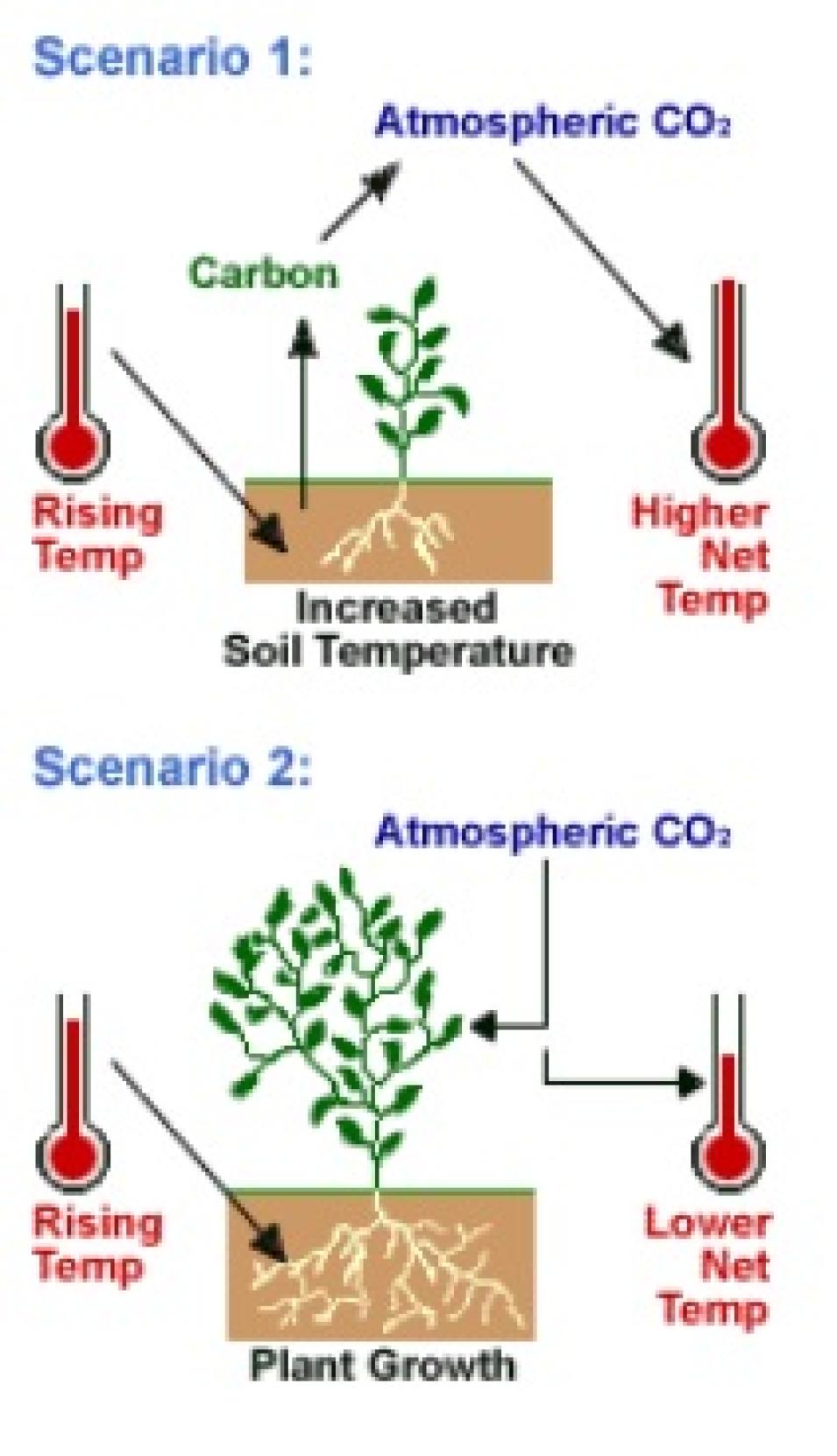"The scientific issue that motivated the question is reasonably complicated," said David Schimel of the Climate and Global Dynamics Division of the National Center for Atmospheric Research (NCAR). Schimel worked with researchers Rob Braswell and Berrien Moore of the Institute for the Study of Earth, Oceans, and Space at the University of New Hampshire and Ernst Linder, of the Department of Mathematics at the University of New Hampshire.
"Within the literature, there's been a debate about the effect of temperature on ecosystems. One line of argument holds that as temperatures increase, ecosystems should lose carbon to the atmosphere," Schimel said, because the effect of increased temperature on carbon release is usually stronger than the effect of increased temperature on plant growth resulting in photosynthesis — the uptake of carbon.
"The opposing argument holds that most warm-weather carbon release is from soils. When you release carbon from soils, you also make nutrients that are tied up in soil organic matter more available, which can act to fertilize vegetation," Schimel said. This would increase plant growth, increase photosynthesis, and thus moderate carbon release to the atmosphere.
Until recently, this system could be studied only through the use of models or measured directly only within limited local areas. "We set out to examine the effect of temperature on atmospheric carbon dioxide concentration, to understand how temperature affects carbon storage in ecosystems globally," he said.
"The data support both hypotheses, but suggest that they are offset in time," Schimel said. "We found that, as predicted, in warm years there's a release of carbon. But one to three years later, just as the other theory predicts, there's some carbon uptake.
"The next step is to find out which effect is larger," he said. At the peak of warm periods, plant growth increases in polar and temperate regions and decreases at lower latitudes, including tropical rainforests and drier savannas and grasslands. In global warming scenarios, the research suggests decreased plant growth and a decrease of moisture in semi-arid regions.
It remains to be seen whether delayed carbon dioxide uptake by plants is large enough to offset the increase in atmospheric carbon dioxide resulting from warming. However, the research results highlight the role of new data sets in understanding global change, Schimel said, as well as the usefulness of computer models that connect the atmosphere and the biosphere.
References
Braswell, B. H., D. S. Schimel, E. Linder and B. Moore III. 1987. The response of global terrestrial ecosystems to interannual variability. Science 278: 870-872.
For more information
NASA Goddard Earth Sciences Data and Information Services Center (GES DISC)
| About the remote sensing data used |
| Sensor |
AVHRR |
| Parameter |
atmospheric carbon dioxide |
| DAAC |
NASA Goddard Earth Sciences Data and Information Services Center (GES DISC) |
